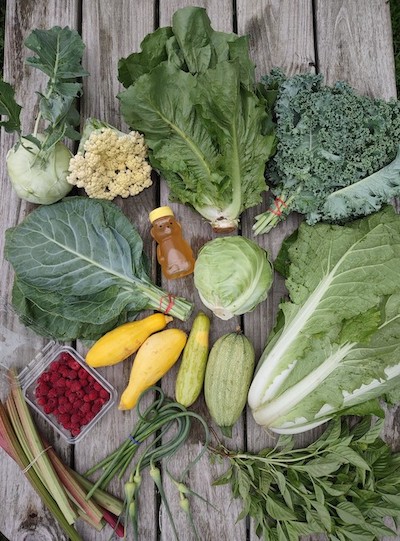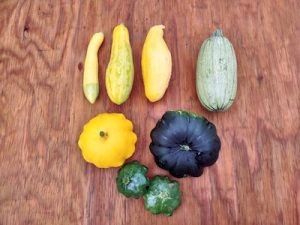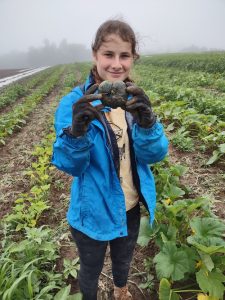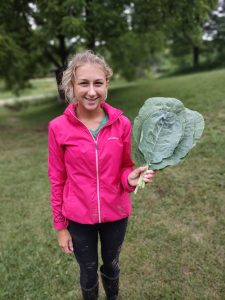
“If the house of the world is dark, love will find a way to create windows.”
~Rumi~
- Green Cabbage – All Shares
- Kale – All Shares
- Collard Greens – All Shares
- Napa Cabbage – All Shares
- Honey – All Shares
- Romaine Lettuce – All Shares
- Basil – All Shares
- Summer Squash – Full & Flex Shares
- Farmer’s Choice: Raspberries or Rhubarb – Half Shares
- Farmer’s Choice: Cauliflower or Kohlrabi – Full Shares
- Garlic Scapes – Flex Shares
Farmer’s Notes
*The honey is from last fall’s harvest – it is unpasteurized and not recommended for pregnant women
*Most years we give spring Napa cabbage before it forms a head, whereas the late fall crop is more condensed
*Collard greens for a second week comes as our ‘vegetable of the week’ and with a few recipes
*Basil is the first of several different sporadic deliveries during the season – it can last a week in a glass of cold water (do not refrigerate)
*Cabbages can be sauteed, made into a slaw, or a kraut
 *Summer squashes are coming on strong and come in several different varieties: yellow, patty pan, and zucchinis
*Summer squashes are coming on strong and come in several different varieties: yellow, patty pan, and zucchinis*We are enjoying a cool day today after 1.5 inches of rain last evening
*Please return our boxes and ice packs each week, and wash the produce thoroughly
There are several strategies we use here on the farm to deter pests, rodents and unwanted animals from taking too much of our field crops. Sometimes it is row cover to keep flea beetles from eating the braising mix or radishes, Row cover can also keep deer from eating romaine heads or beet greens as they nightly wander the fields browsing. Another common method is fencing: deer fencing around a field perimeter or an electric fence around a certain crop like the strawberries or sweet corn to keep the raccoons out of it. There are sonar soil probes to irritate moles, live traps for skunks and opossum, and we use some organically approved insecticides at times to control the Colorado potato beetle and the cabbage looper. Then we just shake our heads and let the rabbits take their share, or the cucumber beetles devour 15% of the squash crop. Every year is a little different, but it is always an important aspect of this business and one to be taken seriously. How can we best coexist with our fellow farm animals and still maintain our livelihood?
~Farmer Norm
The Crop of the week for summer share #4 is Collard Greens! Collard greens have been eaten for over 2000 years and are one of the oldest members of the cabbage family. Collard greens are rich in nutritional value and packed with iron, calcium, magnesium, and potassium. These dark green leaves are a staple side dish in southern cooking, commonly used in braises and stews as the hearty leaves can hold up in much longer cooking times than most leafy vegetables. But these large, versatile leaves can also be sautéed, steamed, blanched, fermented to make collard sauerkraut, or even eaten raw in place of a wrap or taco shell. To store fresh collard greens until you are ready to use them, wrap them unwashed in a wet paper towel in an open plastic bag. They can store for up to 5 days in the refrigerator, and make sure to wash them well before cooking. Enjoy!

Some Recipes to Try:
[ultimate-recipe id=”6517″ template=”default”] [ultimate-recipe id=”8153″ template=”default”] [ultimate-recipe id=”7154″ template=”default”]


